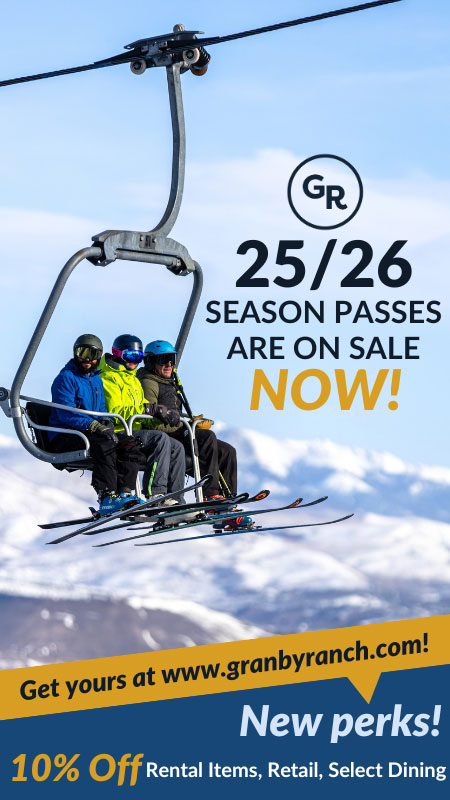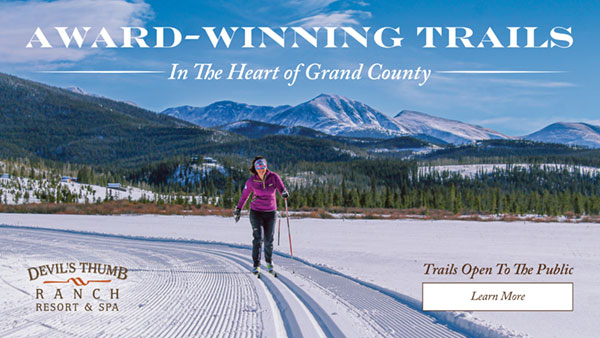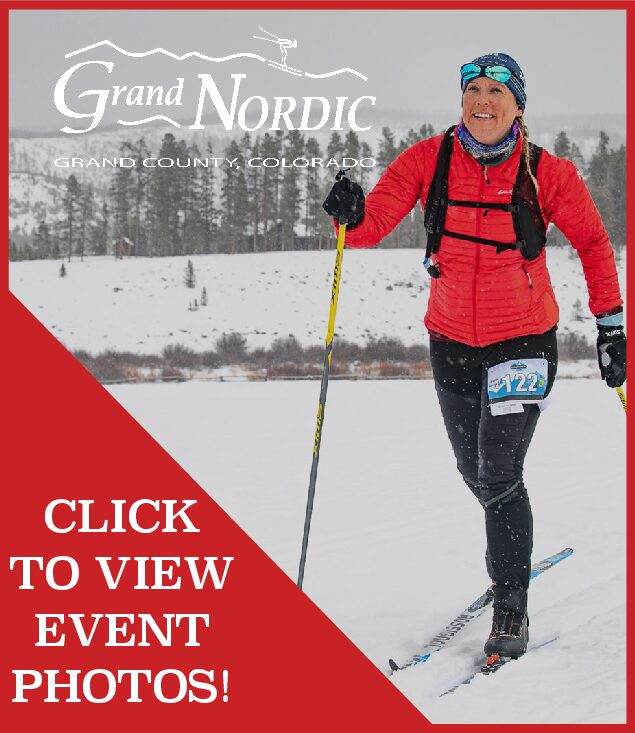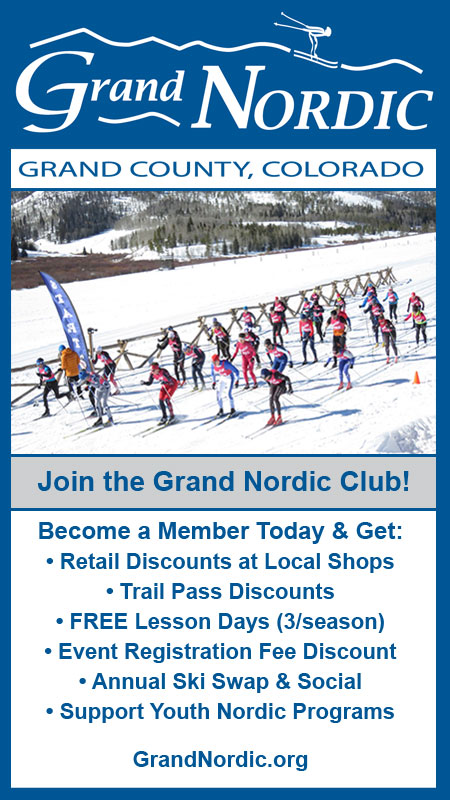The storms this week keep adding more base in the High Country while the winds just keep blowing it around into every conceivable opening. When you go outside, dress for the temperature – when it is sunny, a good fleece over T-shirt or turtleneck is great since the thermometer has been hovering at upper 20’s and 30’s. But a top wind layer is essential to your wardrobe! The wind constantly rearranges the snow, around every corner the tracks might disappear or there might be a big drift. Gaiters, even shorter ones, are very helpful to keep the snow out of your boots. I also have overmitts for when my fingers are just too cold to function – they warm up your hands almost 5degrees or so! Skiing with your back to the wind turns you into a sail! But remember – what goes down the trail must come back… Plan to ski in the trees where you get the most protection.
Try to find a good skin protector like Dermatone for your face or exposed areas. Some protectors work well for both cold temperatures AND wind burn. Go prepared for a longer ski than intended as darkness comes faster and temps drop sooner when the sun is blocked. The wind can bring down branches after the groomer passes that can trip you or force you off the trail. Should you get stuck somewhere, a good water bottle, some snacks, and an extra layer will comfort you and a whistle will draw attention to you. Be aware of where you are skiing – a recent intersection or landmark or a trail name. If you have a phone signal, you can call for your own rescue!
AVALANCHE DANGERS
Any wet snow on top of what was a weak base in the high mountain areas will be a real problem later in the season and create a fracture point prone to avalanches. The last two winter seasons were some of our worst avalanche seasons ever mostly blamed on a weak base and heavy thick layers built up on top of it. The easiest way to avoid triggering an avalanche and getting injured is by checking conditions on https://avalanche.state.co.us and avoiding traveling in backcountry areas with elevated danger, according to Colorado Avalanche Information Center.
This avalanche season marks over 50 years of operations for the Colorado Avalanche Information Center. CAIC got its start as the Colorado Avalanche Warning Program (CAWP) in 1973 as part of the Forest Service’s Rocky Mountain Research Station. This was the first program in the US that issued public avalanche forecasts. Today, CAIC remains a leader in avalanche safety, research, and education.
Avalanches typically occur on mountain slopes that are a certain degree angle. The sweet spot is a slope that is 30 to 45 degrees steep, according to CAIC. That’s steeper than most black diamond runs at ski resorts. Measuring slope steepness accurately is difficult, especially for inexperienced skiers and hikers. If you’re unsure about a slope’s steepness, you can look for other clues.
Toppled trees or large clearings in forests can give you a hint that a particular slope is prone to slides. Clearings with few or young trees next to mature trees are a major indicator you’re moving through avalanche terrain.
Cracking or collapsing sounds originating from the snow can also be a warning sign of an impending avalanche. The average human can trigger a slide in a matter of seconds. But you may not get warning signs like cracking or collapsing before triggering a dangerous avalanche.
Backcountry travelers rely on search and rescue volunteers like our own nationally-recognized Grand County Search and Rescue. “Getting caught in a slide is extremely dangerous. Surviving a complete burial after as little as 30 minutes is rare due to oxygen deprivation,” said Greg Foley, a senior member and volunteer with Grand County Search and Rescue. “By the time search and rescue gets there, it’s usually all over,” Foley said. “It’s tough on us emotionally,” he said. “People need to understand that moderate and considerable avalanche danger is not safe enough.”
Officials recommend anyone recreating in the backcountry be trained in avalanche safety and carry standard safety equipment: a beacon, a probe for helping locate a victim and a shovel to uncover them. Colorado Adventure Guides, a partner with Grand Nordic, offers winter Backcountry Education and Avalanche Safety courses in Grand County some of which are free. Visit https://www.coloradoadventureguides.com/backcountry-education/. Grand Nordic members also get a discount by calling 970-893-8007 for information and to sign up, even for the more expensive AIARE courses.
FREE LESSONS
Don’t forget to help your season with free lessons now that the snow is getting better and better. Snow Mountain Ranch hosts the second of two Grand Nordic Free Lessons on Sunday Jan 12 featuring instructors from Grand Nordic, Winter Park Competition Center, Colorado Nordic Masters, Summitt Masters and Snow Mtn Ranch with morning classes starting at 10a and afternoon classes starting at 1p. Grand Nordic members receive complementary trail pass and equipment if needed. Classes are offered both morning and afternoon for both classic and skate at beginner, intermediate and advanced levels as well as kids 5-10 never-ever skiers, classic and skate. Please try to judge your ability honestly – don’t think a more advanced class will make you a better skier! For more information call 970-887-0547. To sign up visit www.skigrandnordic.org or www.grandnordic.org





